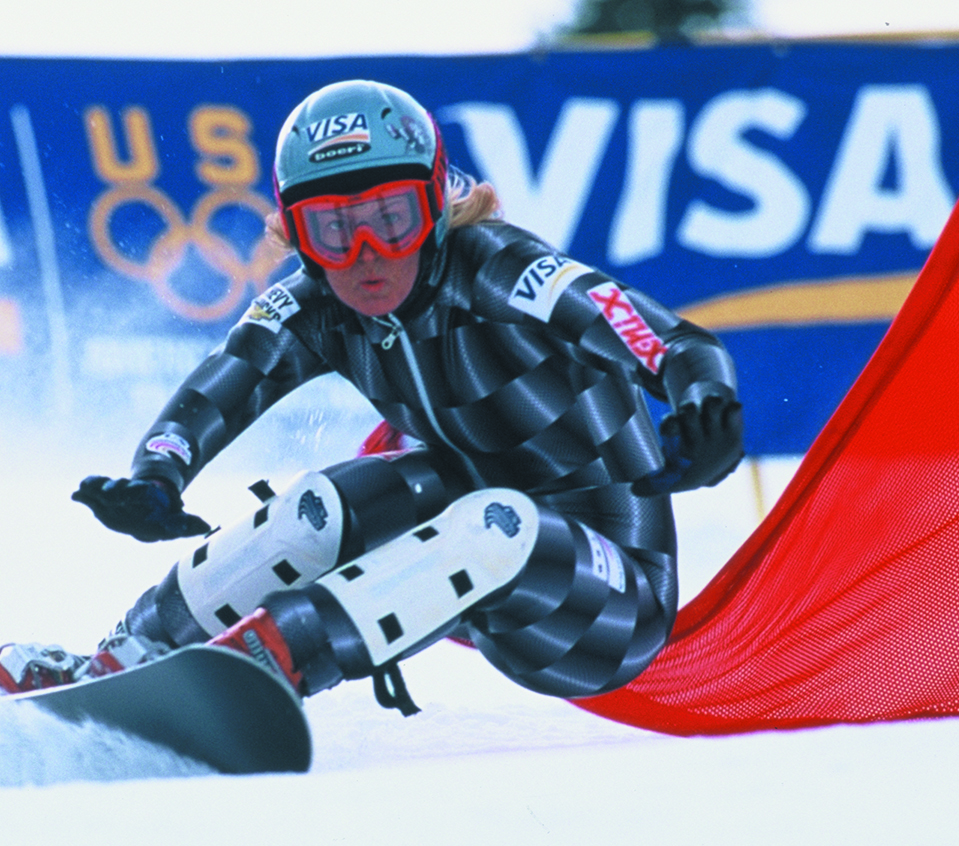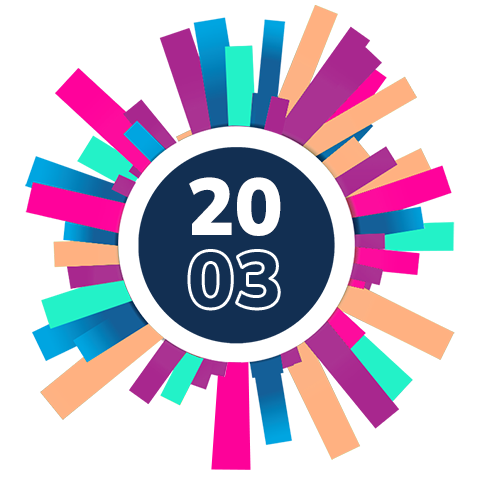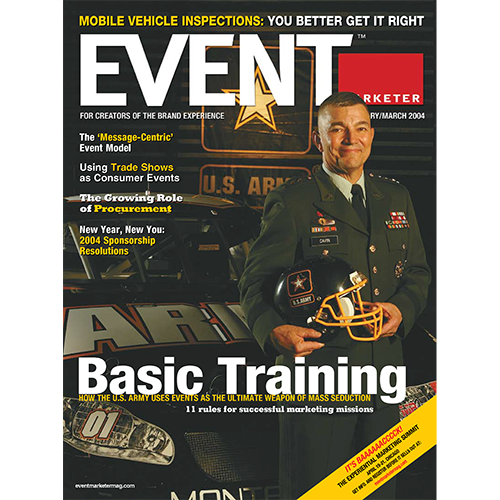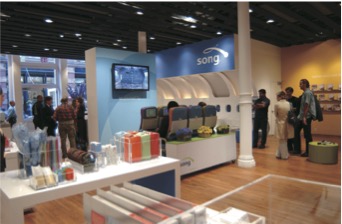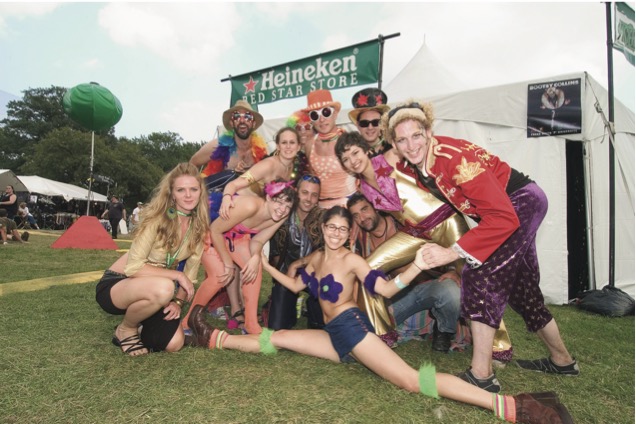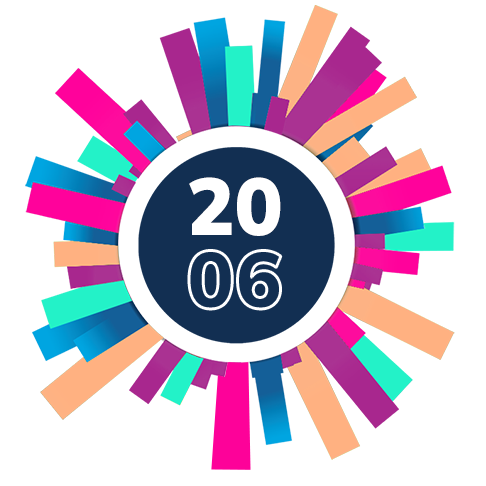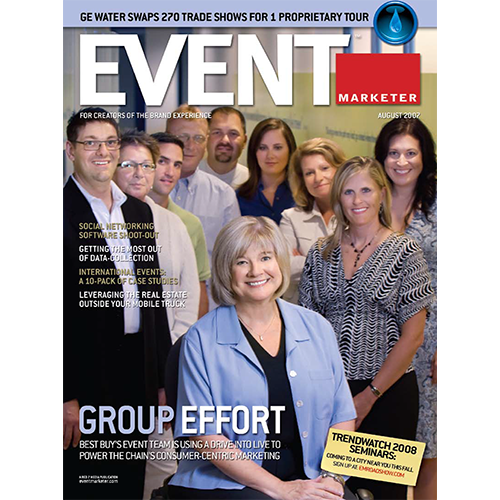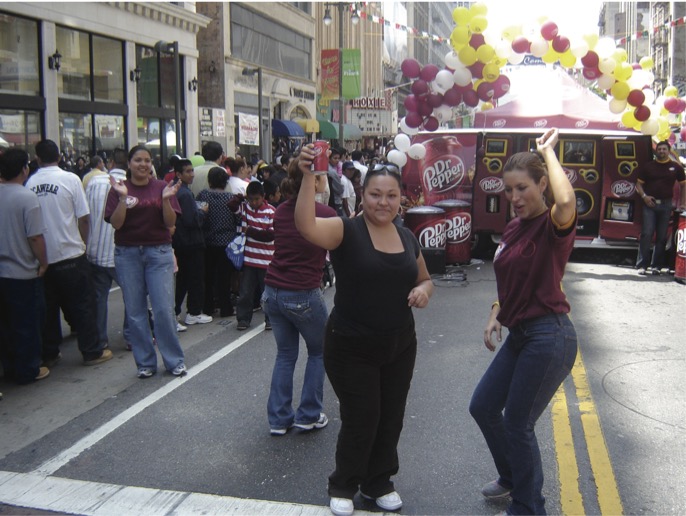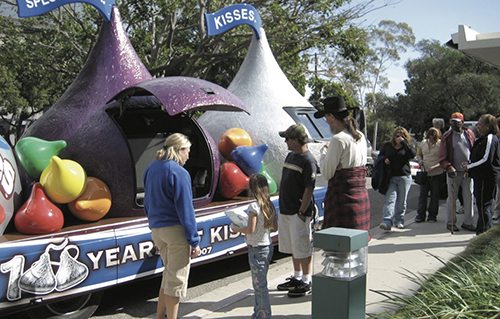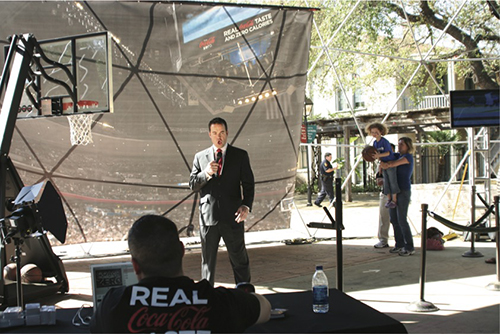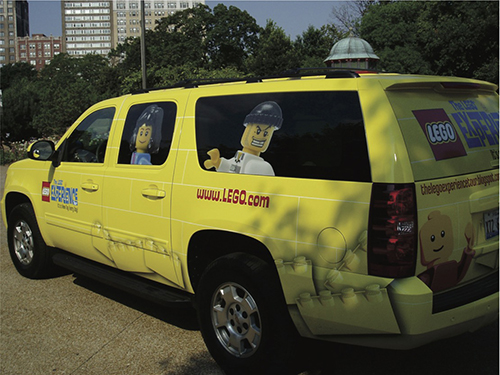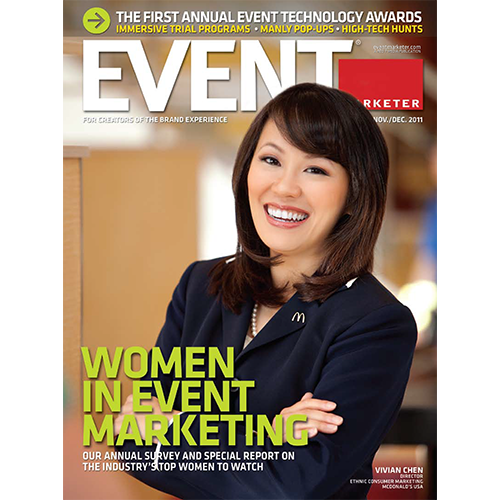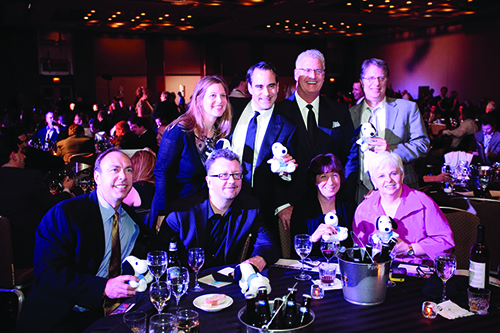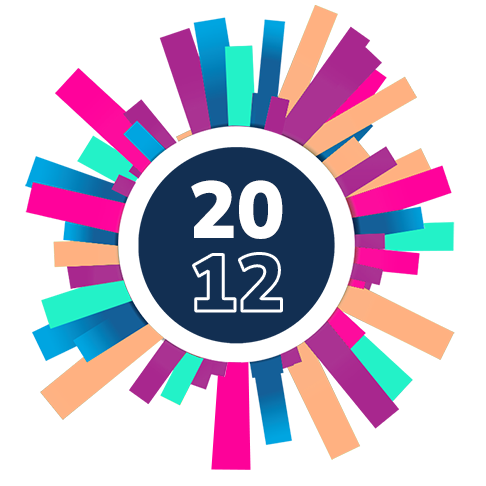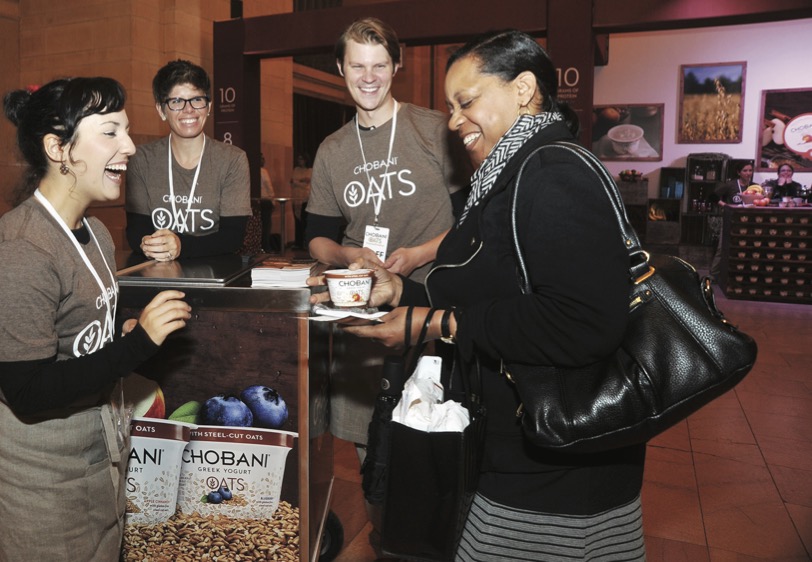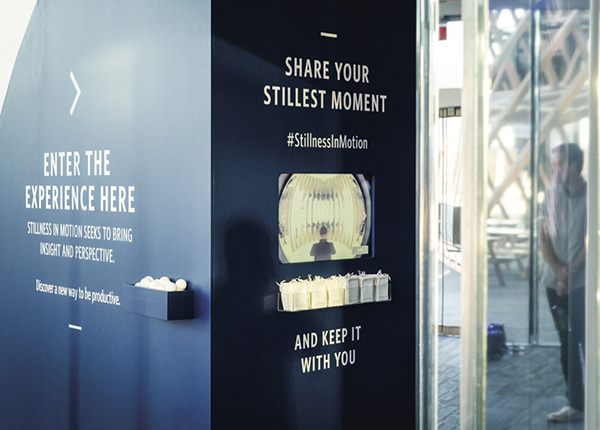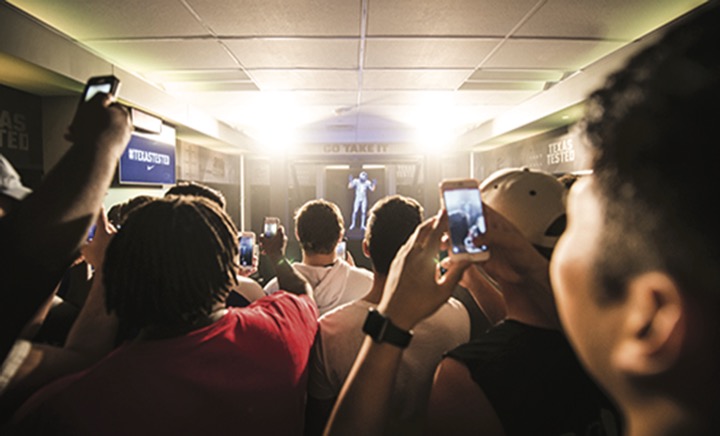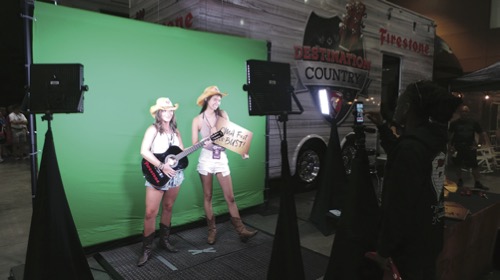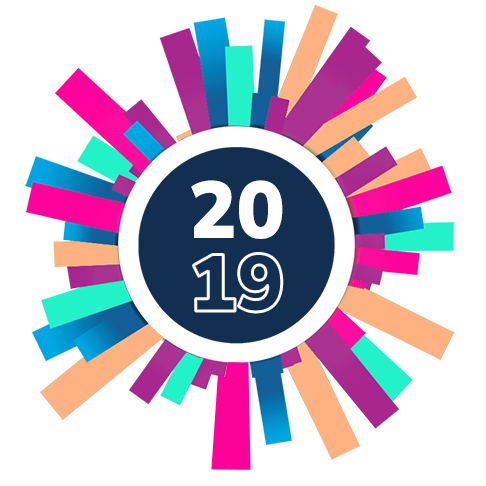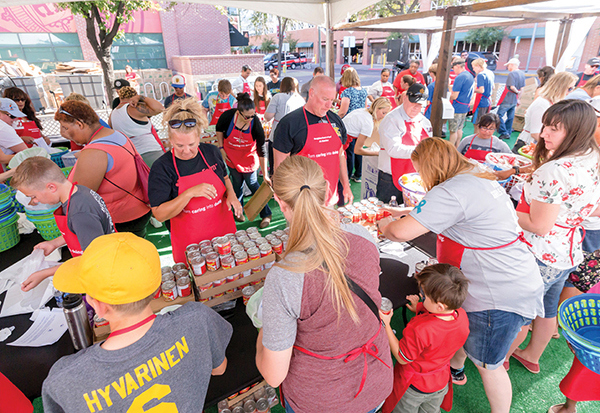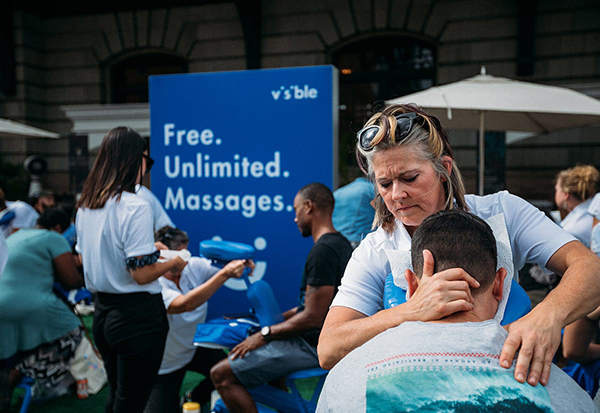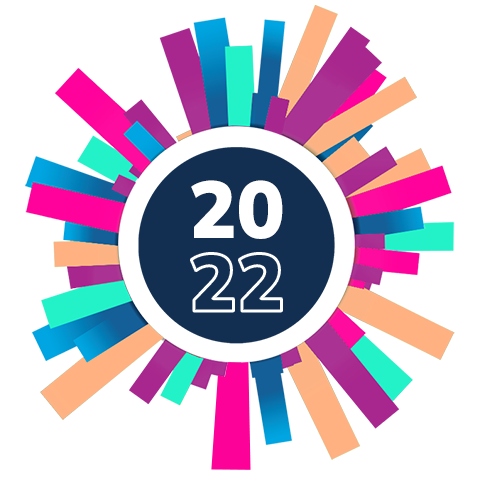2OO2
THEME:
A recession is rocking corporate marketing budgets and chief marketing officers begin looking for alternatives to ineffective, above-the-line spends. Event campaigns, labeled for years as either “non-traditional” or “below-the-line” programs, begin to take form. Early event campaigns are relegated to a few markets or regions—the age of the national program has not yet arrived. As marketers begin to see the potential of event marketing, they start to believe the potential of event marketing.
TREND:
As mobile marketing tours become the fastest-growing form of b-to-c marketing, organizations begin to educate themselves on the nuances of Department of Transportation compliance and start to demand their agencies are certified with the DOT’s guidelines.
TREND:
With event staffing orders up thousands of percentage points over 2001, event agencies and brand marketers begin developing dedicated staff training regimens. These include brand immersion trainings, role play, and even tests that staffers must pass in order to be worthy of the brand they are presenting. The trend will become one of the most critical elements of successful event programs for the coming decade. (Fun Fact: Lego was among the first brands to implement “immersion training” for brand ambassadors.
CASE STUDY:
P&G helps redefine what can and cannot be done within nightlife marketing when it launches a summer program that takes Old Spice into bars and nightclubs. Target male consumers were invited to jump into a portable shower, lather up with Old Spice High Endurance Deodorant soap—and sing. Those brave enough to perform (and trial the product) scored tickets to local base-ball games.
2OO3
THEME:
Marketers begin to commit to event marketing and adopt the term “experiential marketing.” Organizations across the industry develop dedicated event budgets and start to get serious about the discipline. Advertising cuts continue to fuel the event industry’s growth.
TREND:
Sponsorship portfolios begin to get strategic, and Visa leverages sponsorships at a time when debt is high and credit cards aren’t doing well. The brand leans on communication, assessment and evaluation for sponsorship success while looking toward the Athens Olympics. (Visa continues to be a powerhouse Olympic sponsor today.)
TREND:
Builders improve their mobile marketing trucks with better graphics, hydraulic locks, air conditioning, satellite and internet access. In fact, at this time, Wells Fargo takes a mobile classroom on the road with desktop computers and internet access for an educational tour aimed at bank employees. Meanwhile, Anheuser-Busch’s Bud World changes mobile marketing forever with a footprint that includes three interactive exhibits, a theater and the Bud Brew House, where on-site brew masters teach the art of brewing with multisensory engagements.
CASE STUDY:
Sheraton introduces the Sweet Sleeper bed by taking over Central Park for the World’s Largest Pillow Fight starring 600 employees and guests. The event boasts entertainment, music, games, raffles, dozens of beds and a 40-foot by 80-foot giant bed used for the fight.
CASE STUDY:
Brands infiltrate schools to reach moms, including Peeps, which embarks on a 96-market mobile tour that takes the sweet treat right into school classrooms. The program, developed to broaden the awareness of the spongy confection as more than an Easter-time treat, invades art classes with activity workbooks that show students how to use Peeps in arts and crafts.
2OO4
THEME:
Dedicated event marketing departments are being born and staffed and although many are years away from implementing true “event strategy,” they start to embrace a measurement mentality amid chief marketers demanding to know what they’re getting out of face-to-face programs. For some, measurement is premature and unobtainable. For others, ROI numbers are substantial and a preview of better metrics is to come.
TREND:
New technology starts to show off the potential of connected experiences. Wireless attendee tracking systems are showing up at b-to-b events, allowing marketers to track traffic, generate leads, push to websites and, in some cases, allow attendees to communicate with other attendees (a nod to early crowdsourcing).
TREND:
Pop-ups begin their reign as Delta Air Lines’ Song division opens a store in New York’s SoHo district… and changes the industry forever. The Song in the City store has six different areas to experience and features everything from cooking demos to entertainment presentations to comfy couches for hangin’ and a travel-planning area.
CASE STUDY:
Mobile marketers pull into trade shows, rather than exhibit within them as brands like on-demand TV company SeaChange Technologies hits the road with an 18-wheeler that serves as a mobile marketing vehicle—and its trade show booth.
CASE STUDY:
Monster.com turns a billboard into a magnet for a trade show booth. For a week before the SHRM trade show, Monster puts up a static “Billboard Painter Wanted” billboard. A local painter applies, is hired, and is used as a trade show draw. He’s stationed in front of the sign working to complete the message: “We got this guy his job.” Nice.
2OO5
THEME:
With consumer confidence on the rebound, experiential enters the growth years—when event budgets would grow 20-30 percent annually through 2008. With increased spending, however, comes increased accountability as agencies become strategic resources rather than tactical crutches. Wireless and other emerging technologies are adding to dimensions to events. Mall events explode.
TREND:
Photo activations become an industry mainstay, and organizations like The Army National Guard funnels photo leads from trade shows and grassroots events to recruiters in real-time. Another example of early photo activations: Kellogg’s sponsors the American Idols Live! tour, and lets consumers sing karaoke and pose for mock paparazzi photos with Idol cutouts. Samples of the frozen product it was touting are distributed out afterward from disco ball-themed refrigerators.
TREND:
Eighty-two percent of brand-side event marketers report that technology is impacting their event marketing more than it was a year ago. Reactive media, which is being used for interactive displays that let attendees take control, is poised to blow up. Nintendo works with Reactrix to create a life-size Zelda game for its booth at E3.
CASE STUDY:
Panasonic sponsors the inaugural Dew Action Sports Tour, featuring skateboarding BMX and freestyle motocross. The brand’s “Hi-Def Experience” gives consumers the opportunity to learn how to shoot, edit, and manipulate action sports footage with the brand’s equipment.
CASE STUDY:
Kid-friendly mobile tours are trending—on a Fisher-Price tour, staffers chatted up parents about toy benefits while kids had fun in a play area.
2OO6
THEME:
At CES, exhibitors prove that the digital lifestyle has gone mainstream. And so has experiential. Event agencies are becoming integrated solutions providers, and industry clutter is on the rise as traditional marketing agencies and hundreds of startups chase the dollars flowing into experiential. Live campaigns are going to new place reach new faces as brands chase new channels to connect with consumers.
TREND:
Simple elements push mobile tour attendees to make purchases, like Hasbro’s Tonka, which took a fully functional, full-size (more than 10 feet high) Tonka Toughest Mighty Dump Truck to 50 Walmart stores in 14 states for a holiday toy drive benefiting local charities.
TREND:
Lexus debuts holographic technology, which leverages projection-based technology to beam an image of the new Lexus IS sedan spinning, stopping, and showing off for New York City crowds. Other tech trends emerge, such as video photo activations, LED screens, and some of the first virtual events take place.
CASE STUDY:
adidas lures superfans to a hidden showroom as the brand rents a basement in New York City and uses minimal presence at street-level to hint at the showroom. To get in, visitors have to navigate through a strip mall and make several other turns. Brand ambassadors approach consumers who fit the target and whisper clues.
CASE STUDY:
Xbox 360 invites hardcore gamers into the desert for a 30-hour launch extravaganza in Palmdale, CA. The brand created a mini village there filled with more than 500 Xbox 360 consoles.
2OO7
THEME:
Apple rings in 2007 by unveiling the iPhone, creating a stampede for the high-tech gadget of the year. The event marketing world gets techy, too. Event photo vendors are on the smartphone bandwagon, inviting customers to use their own camera-equipped mobile phones to snap photos and email them to a designed website—then log onto retrieve their shots. Having a website (later, the “microsite”) is no longer just a nice add-on to an event campaign, it’s an expected part of the mix. Virtual event platforms make their debut on the b-to-b side.
TREND:
An idea born in the tech world, where hackers and developers were bored by traditional conferences, takes hold among mainstream brands. The new agenda: content, schedule and speakers are created and managed on the fly. The only rule—no formal presentations and a free-flowing atmosphere. Early examples include Disney’s Pooh Camp and a For Dummies book series unconference.
TREND:
Green design emerges—for an environmentally friendly trade show environment, Timberland at Outdoor Retailer Summer Market Expo picks up materials in some unlikely places, like, bicycle parts, which are transformed into furniture. Ninety-eight percent of the exhibit is built with eco-conscious materials.
CASE STUDY:
At the American Dental Association expo, Colgate Total creates a massive LED tunnel that gives the illusion of anti-bacterial cells moving. Inside the booth, dentists give testimonials and four video stations engage attendees. At one station, the exhibit staff use a “heckle-cam” to surprise attendees.
CASE STUDY:
What will go down in history as the biggest event marketing fiasco takes place: Cartoon Network sets out to promote “Aqua Teen Hunger Force” with a 10-market guerrilla marketing effort with electronic boxes that were misconstrued as bombs, triggering a chain reaction throughout the city. The result: a $2 million fine, and guerrilla campaigns from here out are forced to undergo more intense internal scrutiny.
2OO8
THEME:
2008 starts out innocently enough—and then [insert menacing music here] it all changes. The banks, the auto industry, the housing market and, as a result, the entire economy blows up and falls out, driving marketers to look with more scrutiny than ever before at their spending (what’s left of it) and their strategies (if they have one). In just a matter of weeks, everything shifts forever toward more focused and leaner programs that make measurable results the key to the future health of the industry. As a result, of the events of this year, virtual and hybrid platforms become both viable and necessary. And using them to help prove the value of events, along with a rock-solid ROI strategy, becomes the imperative for all.
TREND:
Mall programs become more sophisticated than ever: Aquafina’s Drop of Wellness tour sets up a stylish spa-like footprint where consumers come in and relax while talking with a well-trained “personal trainer.” They can take a wellness quiz, and get tips on incorporating stretching and personal hydration.
TREND:
Oracle OpenWorld 2008 takes an “un-conference” approach, featuring attendee-driven experiences, a massive demo area, happy hours, and tons of networking.
CASE STUDY:
Ben & Jerry’s mixes activism and product promotion by kicking off a partnership with the Lennon Estate and nonprofit Peace One Day and restaging the Bed-In For Peace event in New York City. Media are invited onboard a branded glass box truck to sit on a bed that replicates Lennon’s and Ono’s, and conduct interviews.
CASE STUDY:
Lincoln Financial hosts concurrent annual conferences for two divisions with style and substance—professional script writers, actors, tech concepts that tap into attendees’ personal business sense and late-night talk show-style segments.
2OO9
THEME:
The first few months of 2009 are filled with layoffs, budget cuts and cancellations, but the industry keeps on keepin’ on. Social media becomes more and more crucial to every campaign out in the field, thanks partly to its more cost-effective buzz-building potential. Bloggers and online influencers help to do the heavy lifting for the brand. The sea change makes everyone a little sea sick, until Lego shows up with its Experience Tour, and marketers discover that there is a light at the end of the tunnel.
TREND:
Major brands are pulling products out of their trade show booth and paring down displays and demo stations. Microsoft reworks its CES strategy in 2009 to engage its key target: press. It minimizes its show floor space but creates a targeted, 14,000-square-foot off-site tent for journalists with sleek demo rooms and a full broadcast room for them to report from.
TREND:
Assets from previous programs give new life to budget-conscious events. For example, Napster reuses an outdoor-use geodesic dome from its X Games sponsorship for a trade show booth indoors at Best Buy’s business event. And at the Tampa Bay golf course where the annual Outback Steakhouse Pro Am was held Jim Beam Global deconstructs its Midnight in the Garden of Agave national tour and adds an unexpected nightclub feel to its tent.
CASE STUDY:
Cisco takes its global sales meeting virtual for the first time in 20 years: Global Sales Experience (GSX) goes online to recognize, motivate and reward sales teams. Brand messaging-themed scavenger hunts and puzzle-solving online games are offered, as well as a virtual concierge, sessions and keynotes.
CASE STUDY:
Non-endemic brands connect the dots for consumers at niche events, like McDonald’s which lands a sponsorship as official coffee of Mercedes Fashion Week in New York City with its McCafe espresso brand. The brand sets up a cozy café with stylish coffee tables, comfy seating and pretty throw pillows. The footprint also features three espresso machines manned by friendly baristas.
2O1O
THEME:
It’s a new beginning, and the top of the pops is Apple’s brand-new game changer, the iPad. As tech-savvy consumers scramble to get one, every brand marketer is dying to get a taste of its cool factor by putting the device front and center at every event they can. The fear of virtual events is subsiding, too. But things are different than they used to be. The days of flying an entire sales force to Monaco for the Grand Prix, and incidentally having a few meetings and trainings, are over. Instead, companies opt for hybrid and satellite models, keeping most of the attendees at home or in-office, and turning the travel into an incentive for exemplary performance. Bar codes are paving the way for RFID and, soon, NFC technology, while mobile apps are just now showing off how powerful and exciting, they will become in the next few years.
TREND:
Baby Boomer and “mom” marketing rise, like the Generation Huggies program that asks what motherhood means to consumers, and IFC, which sets out to find the “rockin-est” mom in the nation. Elsewhere, Hershey and FOX invite 10 bloggers and their kids to a late-night VIP event at the Smithsonian Museum to build buzz for the film “Night at the Museum: Battle of the Smithsonian.”
TREND:
The age of the paperless ticket arrives. Smartphones are the newest platform for paper-free event ticketing and platforms like Eventbrite sell tickets for a commission.
CASE STUDY:
Virgin Galactic hosts an out of this world launch event in the Mojave Desert and EM goes on-site: It’s the maiden voyage of the Virgin spaceship enterprise and 800 VIPs and press members attend the logistically challenging California event.
CASE STUDY:
Kenmore transforms a former art gallery to showcase its new look as the Kenmore Live Studio, which features new products and delivers experiences while being streamed on Facebook a la Food Network-style live cooking shows. Social media is coming into its own, and brands are relying heavily on it for buzz building and reach.
2O11
THEME:
The economy begins to gain slow momentum after the budget-crushing storm of 2009 and 2010, and event marketers rebound, too, working smarter with less and going where they’ve never gone before. Working smarter in 2011 also means finding untapped audiences. Unique consumer preferences, passions and behaviors begin to drive entire programs. The beleaguered trade show industry shows signs of a comeback, too, thanks to new high-tech tools and data collection strategies.
TREND:
Some brands are saying goodbye to the scripted and prompted trade-show presenter—like Intel, which drops the ear-prompter-style ambassador in favor of pairing its employees with pro product presenters to create a lively mix of expertise and entertainment.
TREND:
Culture-based brand experiences whisk consumers away without ever leaving the States—like, Barilla Academy’s six-week Summer of Italy cultural program featuring a series of activities ranging from cooking classes to a free concert in Central Park featuring Andrea Bocelli.
CASE STUDY:
Boeing executes its biggest-ever 747-8 reveal with 10,000 employees witnessing a massive kabuki drop inside a hangar transformed into an event space with theater seating, screens and a stage.
CASE STUDY:
Dial for Men hosts Camp Dirt—a getaway at a Colorado Ranch designed with dirty activities built to engage men and then get them clean. Bull dozer drag racing and a mud slide are a part of the mix.
2O12
THEME:
Marketers set their sights on millennials, the cloud becomes the hotspot for event practitioners to store, share and track data in real-time before and during events. Brands eschew the cross-country tour and instead go big in single markets. And the “fewer markets, bigger impact” strategy enables brands to hyper-target their approach to not only unique demographic populations, but to the geographic profiles of each market’s inhabitants.
TREND:
Brands slow their national tours and go big on single-markets events while hyper-local campaigns also gain traction. Example: For its Pedal for a Greener City campaign, Claritin Canada traverses Toronto in hand-painted Eco-cabs.
TREND:
Smart marketers push to maximize their trade show investments more than ever: Dell incorporates more fabric and aluminum into its booth, making it more lightweight, which also saves on shipping. It goes paperless to cut printing costs and stops handing out USB keys with content on them, opting to email the literature instead. In the end, Dell saves thousands of dollars in production costs.
CASE STUDY:
The Levi’s Mirror, Mirror tour reaches young female consumers on college campuses. Part of a push to connect with millennials and launch its Curve ID jeans collection, Levi’s activates a studio where women can get measured for the jeans, get makeovers, meet with fit specialists and take a photo.
CASE STUDY:
Coke’s brand pavilion at the 2012 Summer Olympics—a fan experience that transforms the architecture of the structure into a 35- minute interactive music-making journey—makes waves across the industry. Event marketers have made clever use of the exteriors of many a building and mobile vehicle, but few, if any, have made such impactful and interactive use of the architecture itself at this point.
2O13
THEME:
The “created for viral” event era arrives with WestJet’s Christmas Miracle program, where 150 volunteer “WestJetters” dress as Santa’s helpers and purchase and wrap personalized gifts for passengers aboard two flights. Online video of the experience leads to a record-breaking viral result, proving that event content is a viable buzz generator. Meanwhile, electronic dance music goes from underground to mainstream as EDM festivals become a big business. Concert promoters like SFX, Live Nation and AEG get in on the game, buying up festival properties
and facilitating partnerships with brands like Anheuser-Busch, Motorola and Heineken.
TREND:
Target amps up efforts to connect with the college collective and changes its perception among millennials as a place where their mom shops—scoring a Grand Ex in the process. The brand’s Bullseye University Live is a 360-degree
experiential campaign that is part digital, part physical, part reality show and total marketing genius. It starts with a Bullseye University dorm erected on-campus at UCLA and inhabited by YouTube personalities and grows from
there with live-streaming, Target merchandise and, of course, shopping opportunities.
TREND:
Cisco upgrades the industry standard smartphone strategy this summer with the Cisco Cloud Mobile Trivia Game, which in June provides attendees at its annual Cisco Live! user conference a fun and organic way to experience the event. Even more fun—the in-depth analytics report that is used to craft more efficient event experiences.
CASE STUDY:
As interest in live-streaming interest grows, Bud Light’s 50|50|1 concerts bring the power of live music and the fun of tipping back a Bud Light to fans in all 50 states on a single day. Fans download the Bud Light Music First app to score prizes and 50|50|1 concert tickets throughout the summer. Concerts in five markets are livestreamed on the Bud Light Music First MySpace hub. The event draws 2.5 million live streams and one million unique live streams, the biggest for any A-B brand.
CASE STUDY:
Samsung’s Feist Holographic event, designed to hype its new Galaxy S4 phone and position the brand as a technology leader, does just that via a three-city simulcast that leverages hologram technology to make images appear in 3D form. The highlight—a choreographed holographic musical performance by Canadian music artist Feist, which creates a “wow” moment shared among attendees.
2O14
THEME:
In one of the most immersive campaigns the industry had ever seen, Bud Light combines content, social currency and surprise and delight with a true city takeover, transforming Crested Butte, CO, into Whatever, USA, a fictional town that literally brings to life the brand’s Up For Whatever marketing platform aimed at on-the-go millennials. Storefronts and restaurants are painted in signature Bud Light blue, drones deliver cold brews and engagements are delivered one-by-one, inspiring future experiential strategies everywhere. It is still being studied.
TREND:
Brands begin activating events that engage multiple senses to help deepen the emotional impact of their live experiences on consumers. A prime example: Glade pops up in New York City with a multisensory space featuring five unique experience rooms inspired by its fragrances. From bubble machines to sand-covered floors, attendees are invited to interact with and interpret the brand for themselves as messaging throughout the pop-up asks, “What Will You Feel?”
TREND:
Dam, Freightliner! The truck manufacturer literally takes product launches to new heights, introducing its
self-driving Inspiration Truck with a projection mapping experience on the Hoover Dam that shatters the Guinness World Record for highest light output projection. The brand leverages the iconic structure to display an audiovisual presentation highlighting the history of the company and its milestones.
CASE STUDY:
Burgeoning sports property the Ultimate Fighting Championship during International Fight Week blitzes Las Vegas with one of the biggest experiential tech nets ever dropped by a single brand. The result is a citywide, live-wired experience in which fans tap their RFID-enabled badges, wristbands and QR codes to participate in activations, earn UFC Rewards points, instantly share their experiences on social media and rub shoulders with their favorite UFC stars all across Sin City.
CASE STUDY:
Target’s first-of-its-kind live recording of a four-minute Imagine Dragons concert during the 2015 Grammys transforms a television broadcast into an experience just as compelling as the live version. The money-can’t-buy program thrills thousands of die-hard Imagine Dragons fans, who, when cameras roll, ultimately become part of the show. At the end of the performance, TV viewers watch as attendees’ LED wristbands combine to form a human Target bull’s-eye.
2O15
THEME:
User-triggered experiences transform the landscape and “engagement” takes on a new meaning. No longer are consumers confined to an experiential footprint, as brands expand interactivity through mobile extensions and into the virtual reality space. And on the b-to-b side, the line between business and consumer events continues to blur, as brands “festivalize” their standard conferences. Airbnb blows the trend wide open at its annual hosting conference, Airbnb Open, with a footprint that spanned 17 primary venues and dozens of small businesses, and even private homes, across downtown L.A.
TREND:
After years of brands trying (and failing) to bring augmented reality to the mainstream, Niantic Labs hits
the jackpot with Pokémon Go. The AR-based mobile app takes the world by storm, earning more downloads
in its first week than any other app in history. In events, marketers begin to embrace the potential of gamification at scale.
TREND:
Sitcom fans rejoice as some of television’s most popular series are brought to life through pop-ups
featuring replica sets. Hulu gives “Seinfeld” enthusiasts something to yada, yada, yada about with a “Seinfeld: The Apartment” experience in New York City. A highlight: Fans replicating the famous George Costanza Valentine’s Day photo shoot.
CASE STUDY:
Absolut’s Electrik House becomes a blueprint for the “user-triggered” experience trend. The program features cutting-edge wearables that the brand uses to measure the collective energy of attendees. A new engagement is unlocked each time their energy levels reach a new peak. Miraculously, no one blows a fuse.
CASE STUDY:
One of the longest-running sports sponsorships in the industry becomes one of the leading sports
sponsorships in the industry when it unleashes a series of technology-fueled “firsts” at the U.S. Open. This includes the first-ever hydro-interactive tennis experience, which projects real-time on-court action onto a massive water wall, as well as haptic responsive racquets paired with HTC Vive VR headsets that allow fans to return a serve to CGI versions of Maria Sharapova.
2O16
THEME:
The age of the superfan arrives, and brands of every category look for opportunities to indulge consumers. It becomes increasingly important for brands to capitalize on moments and lifestyle trends, and to move at the speed of culture. Smart devices keep on getting smarter, and the “scenic” qualities of events comes into focus as marketers recognize that consumers are carrying with them a suite of tools to capture and share quality content. As a result, the industry sees an uptick in Instagram museums.
TREND:
Cadillac and Lincoln are among the first in a wave of automakers who create designated chill spaces form consumers. Neither showrooms nor retail environments, the luxurious venues offer immersive brand storytelling opportunities for automakers aiming to engage customers in a relaxed, low-pressure setting. Consumers every-where agree it beats fighting for a table at Starbucks.
TREND:
Anyone with a smartphone becomes a live content producer as streaming apps like Meerkat and Periscope go mainstream, earning attention from event marketers aiming to boost their social strategy and leverage events as content. (Who knew that in just a few years, streaming would literally become the industry’s lifeline.)
CASE STUDY:
In a hyper-local-at-scale play, Netflix fans the flames surrounding the reboot of the cult classic “Gilmore Girls” by transforming more than 200 local coffee shops across the country into Luke’s Diner, the TV series’ fictional “hangout.” Participating shops are provided signage, branded coffee cup sleeves, flannel shirts and baseball caps for staff (a nod to Luke’s apparel in the series), as well as funds to supply free coffee from 7 a.m. to noon.
CASE STUDY:
Escape Room experiences, originally created by entrepreneur Victor Blake, take a branded turn. Companies transform simple storylines into intricate puzzles that must be solved in order for participants to—you guessed it—escape the room. Ford levels up the trend with the first-ever drivable escape room, which highlights key technology inside the new Ford Escape.
2O17
THEME:
Personalization is the name of the game and event measurement has never been more important. Esports explodes with potential for experiential marketers as big brands put big bucks behind gaming and sponsor-ships in the space. Marketers crack the code on millennials’ obsession with nostalgia. And b-to-b mega shows like Oracle OpenWorld, transform the agenda by infusing more flexibility, wellness and networking into the experience. The industry reaches a state of maturity and potential like nothing seen before.
TREND:
Biometrics, a field that encompasses the measurement and statistical analysis of physical and behavioral characteristics, emerges as a potential game-changer in measurement. Brands begin leveraging the tech to gauge attendee emotion. Acura’s 90-second Mood Roads activation takes Sundance by storm, as participants are equipped with 30 biometric sensors that measure 24 integration points. Each attendee experiences a customized journey in real time as landscape, color, music and speed all change based on their mood.
TREND:
“Go big or go home” takes on new meaning as the tiny house trend grips the industry. First popular among homeowners looking to downsize or reduce their environmental footprint, the small homes vary in size from 100- to less than 500-square-feet. They’re quick and easy to build and transport—and brands take note. SPAM, NESTEA and Google are among those leveraging the trend for events ranging from sampling activations to tech showcases. Event marketers learn it’s a small world after all
CASE STUDY:
A total solar eclipse is on its way, and everyone wants to be where the sun doesn’t shine. The “Path of Totality,” where the eclipse will be most visible, is a 70-mile-wide swath across the U.S. Consumers and brands alike lose their minds. More than 100 parties, festivals and concerts are slated to celebrate the phenomenon, and brands lead the way, activating everything from virtual reality live streams of the skies to stargazing Solar eclipse viewing glasses sell out nationwide.
CASE STUDY:
It’s the end of an era. LEGO’s seven-year-old KidsFest program, which attracted more than a million attendees in the U.S. and Canada over the years and served as one of the industry’s longest-running experiential programs, comes to an end. Ever the experiential brand, LEGO says it is “careful not to fall in love with
an event just because it has always worked.” The brand’s World of Creativity tour is born shortly thereafter, ushering in a new era of kid-friendly events.
2O18
THEME:
As content continues to be king, brands invest heavily in at-event content strategies, building dedicated studios within event footprints and exhibit spaces, pushing out content on-demand, publishing broadcast schedules, recruiting speakers and powering the programs with on-site video production teams. Phew. The Experience by Dell Technologies at SXSW leads the way, mapping back panels, executive-on-ones and even musical performances on the stage back to Dell products, tools and innovations.
TREND:
Brands experiment with exclusive overnight experiences that add a level of access and intimacy that few fans can forget—transforming them into superfans. Airbnb leads in this space with a program that enables it to partner with brands and agencies to promote sleepovers—like with Taco Bell Canada, which celebrates the launch of the Steak Doubledilla with a sleepover event for a group of superfans chosen from video auditions explaining why they wanted to be part of the experience.
TREND:
The #MeToo era creates an opportunity for brands to humanize their campaigns and demonstrate to cause-centric consumers that they’re about action, not talk. In response to the controversy surrounding CES’s all-male key-note lineup, Twitter hosts and live-streams an alternative keynote event, #HereWeAre, spotlighting female leaders in tech.
CASE STUDY:
State Farm transforms a cause marketing campaign into a movement, by acting on research that reveals 70 percent of millennials and Gen Xers love to volunteer, but only 25 percent actually do it. The brand closes the “intention gap” with the award-winning Neighborhood of Good program, which is supported by locally relevant, easy-to-access volunteer opportunities across events, digital engagements and meaningful face-to-face experiences.
CASE STUDY:
Entertainment brands continue to leverage experiential to beat the competition in the battle for eyeballs with the rise of streaming platforms and endless content for consumers. HBO changes the game completely, with SXSWestworld, a highly interactive experience for fans of the “Westworld” series. Driven by storytelling and personalized narratives—led by the actors who reportedly never once broke character—no two experiences were alike for the 4,500 attendees.
2O19
THEME:
The privacy act and talk of the death of the cookie begin to change the conversation surrounding data capture and use for marketers. At the same time, increasing incidents involving active shooters at major events, including the 2017 Route 91 Harvest music festival massacre in Las Vegas, present a sobering new reality for marketers responsible for planning group gatherings. Marketers respond by incorporating new training and updated event safety plans. The industry zeroes in on sophistication, strategy and safety.
TREND:
Maybe it’s the influence of the poop emoji, but campaigns for personal care brands, especially the ones consumers use behind closed doors, capitalize on relatability with irreverent, funny and honest programs that confidently tell consumers in-person: We get you, and others get you, too. Among them: A carnival by Cottonelle, a “Bald Important People” campaign by Schick, and a mobile tooth brushing station by Spyt.
TREND:
TikTok, a social media app centered on short-form mobile videos accompanied by musical overlays and augmented reality-powered visual effects, launches and its popularity explodes. Considered an upgraded version of video-sharing app Vine, which folded in 2016, TikTok attracts Gen Z in spades (66 percent of users are under the age of 30), but as its popularity grows, new demographics are jumping on board, too. Marketers take note.
CASE STUDY:
Out-of-home meets experiential as Visible, a low-cost service that utilizes Verizon’s network, runs several billboards throughout its headquarters city of Denver with the message: “Unlimited massages, minutes and data on Visible’s $40 per month phone service.” Yup—the brand offers unlimited massages instead of messages as a viral marketing tool to catch consumers’ attention. Consumers call the typo out on social media—and that was all part of the plan. Visible follows through on its promise by offering professional massages in a local park.
CASE STUDY:
Sneaker drops and other hype events increase in frequency, but adidas goes in a different direction: into the future. To prove to consumers that its styles have always been ahead of their time, the brand creates a futuristic bodega pop-up in New York City that transports media, influencers and consumers to the year 2048. In addition to getting a glimpse at what the world would be like in 30 years, the brand muses on what fashion innovation might look like, too, all while dropping new styles for the adidas Originals Ozweego line of sneakers.
2O2O
THEME:
The first quarter begins innocently enough, but by March, the industry quickly dissolves into chaos as the world is brought to a standstill by the global spread of the novel Covid-19 virus. After the initial shock and cancelation of most programming for 2020, marketers quickly get to work with a new purpose and outlook. Connection becomes the goal, and digital the conduit. Absolutely rocked by this global crisis, the agency community rallies together, forming coalitions, pivoting offices and workshops into factories for virus-combatting products from Plexiglas barriers to social distancing signage. It’s a literal fight for survival, but, innovation and creativity abound.
TREND:
The buzzword is “pivot,” and brands of every stripe reimagine their programming for the digital and virtual landscape—from social media live-streams to virtual event platforms. Among them: Stella Artois, which launches Stella Sessions@Home, IGTV broadcasts with top chefs, local chefs and famous foodies as well as Instagram Live virtual happy hours with influencers that support causes for out of work restaurant workers and businesses. On the b-to-b side, brands like Facebook reimagine the virtual event experience as an internal TV network with scripted “episodes” available live and on-demand.
TREND:
Socially distanced in-person programs become the norm, and one of the darlings of this trend is the drive-thru. Stadiums and car washes become a natural venue for these takeovers, as brands like FX transform them with branding and tie a service to entertainment—and all experienced from the safety of the vehicle.
CASE STUDY:
As event marketers shift their focus to digital, they’re challenged with fostering engagement and interactivity. Among early pioneers is Airbnb, which announces a virtual Airbnb Online Experiences platform that allows attendees from all over the world to register for various classes and tours all conducted by hosts live via Zoom, like “Guided Sheep Meditation,” and “Coffee Masterclass.” The elevated Zoom experience will continue to grow in popularity.
CASE STUDY:
Michelob ULTRA pivots its Movement platform into a virtual workout series led by top trainers and private gym owners from across the country who have been impacted by the pandemic. Also featuring special musical guests, the virtual series is available on Michelob ULTRA’s Facebook Live, Instagram Live or YouTube Live channels. Each class ends with a live happy hour and fitness expert Q&A, which pays it forward to local businesses who have been impacted by COVID-19.
2O21
THEME:
In the first half of the year, the availability of Covid-19 vaccines gives marketers, and the world, more confidence in the return to in-person experiences. Still, many events are pushed into the second half of the year as a precaution. One year into the pandemic, and the evolution of the industry and lessons learned spark all new conversations about virtual strategies (SXSW declares the “desktop” virtual experience dead, and adopts a “roving”), skills and jobs of the future; how companies will grow their workforces again and attract talent.
TREND:
With many big industry tentpole shows still postponed, CES among them, mobile tours experience a heyday once again. Brands, like 3D printing innovation brand Stratasys, take their exhibits on the road directly to customers. The result: More qualified interactions, targeted stops and customized, content-rich experiences. It beats the wide net of the trade show—for now.
TREND:
The epidemic of screen fatigue grows, and brands find new ways to bring in-person experiences safely to consumers. It’s the age of the reverse activation, and among the brands capitalizing on the trend are TBS, which treats Conan O’Brien fans to drone-drops of figurines and other surprises at their homes; e.l.f. cosmetics, which drops Instagrammable installations onto influencers’ front lawns for trial and sharing; and YouTube, which capitalizes on the “unboxing” trend by delivering kits containing personalized videos, printed pieces and swag (DIY pizza, books, socks) to its virtual NewFront viewers.
CASE STUDY:
Clear’s “Day of Families” event connects more than 100 family members and for the in-person reunions they’d been waiting for. In partnership with United Airlines and Marriott Bonvoy, Clear, a secure identity platform, leverages its Health Pass service to deliver a COVID-safe reunion event hosted by Neil Patrick Harris at New Jersey’s MetLife Stadium. The logistics involve a charted flight, welcome reception, and water cannon salute.
CASE STUDY:
Events return to in-person with fewer attendees, but richer and more innovative engagements. Bombay Sapphire disrupts the art scene with its first-ever Sensory Auction that offers art lovers the opportunity to bid on an original piece of art by contemporary sculptor artist Dan Lam—not with dollars, but with their emotional sensory response to viewing the creation thanks to neuro-aesthetic technology.
2O22
THEME:
Out of the pressure cooker of the pandemic and into a new era of cautious optimism, event marketers know that consumers and business audiences have changed forever—and the way they do events has to change, too. Sustainability is coming back into focus amid sobering global climate reports and a “we can do more with less” mentality as a result of the habits of the past two years. And from NFTs to holograms to everyone’s favorite buzzword, the metaverse, new technologies are coming in hot, and event marketers across the board are scrambling to figure out how these platforms could impact their strategies—and their bottom lines.
TREND:
Hybrid is the new “pivot,” and brands are working hard to define what that means for their campaigns and event programs. For Intel, it manifests itself in contingency planning as the brand’s hybrid strategy for CES ultimately serves as a lifeline to allow the brand to stay the course when the Omicron Covid-19 variant arrives. Under the theme, “Altogether Wonderful,” Intel’s footprints across two venues serve as rich backdrops and studios for pre-recorded and live-streamed content in the lead up to and over the course of the show.
TREND:
While concepts like the metaverse represent nascent territory, plenty of brands have been quick to dip their toes into the waters of what could be industry-defining trends in the near future. Brands across industries are experimenting heavily with these tools and platforms, from Miller Lite’s Super Bowl LVI bar to Universal and Snap’s virtual concert to promote the movie “Marry Me” to Kia’s Robo Dog NFT Collection that helps fund pet adoptions.
CASE STUDY:
Long-running platforms return from a pandemic-induced hiatus, like Subaru’s WinterFest, which evolves into a music and mountain lifestyle adventure tour featuring small, curated and high-touch experiences under the umbrella of its large presence at eight resorts across the country. In addition to music, the experience includes food and bever-ages alongside giveaways, gear demos and even special appearances by avalanche rescue dogs.
CASE STUDY:
Kind opens a Secret Farmers Market experience in New York City, complete with a faux vending machine that opens up to reveal a spacious indoor market offering fresh, whole foods like nuts and produce—all for free. Designed to drive awareness of the brand’s nutrition philosophy, the program goes viral when TikTok influencers give it a boost. More than 8,000 consumers show up, signaling that events designed to attract are back on track in this new normal.




